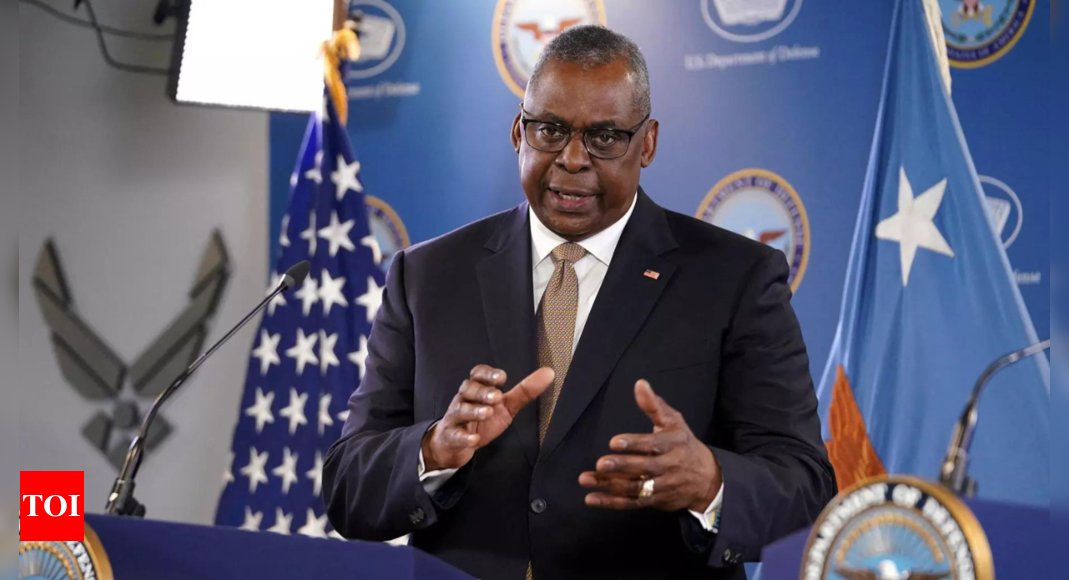
WASHINGTON: US defense secretary Lloyd Austin spoke with his Chinese counterpart Dong Jun via video teleconference Tuesday, the Pentagon said, in the first substantive talks between the superpowers’ defense chiefs in nearly 18 months.
The United States has been working to strengthen defense cooperation with its allies in the Asia-Pacific region to counter China’s growing influence, but also wants to maintain lines of communication with Beijing to prevent tensions from spiraling out of control.
“The two officials discussed US-PRC defense relations and regional and global security issues,” the Pentagon said in a statement, referring to the People’s Republic of China.
“Secretary Austin emphasized the importance of continuing to open lines of military-to-military communication between the United States and the PRC” following talks between the two sides in recent months, the statement said.
Austin also “reiterated that the United States will continue to fly, sail, and operate — safely and responsibly — wherever international law allows,” and “underscored the importance of respect for high seas freedom of navigation guaranteed under international law, especially in the South China Sea.”
Austin’s last significant interaction with a Chinese counterpart occurred in November 2022, when he met with Wei Fenghe in Cambodia.
Wei was subsequently replaced by Li Shangfu, who shook hands and spoke briefly with Austin at a defense conference in Singapore last June, but did not hold a formal meeting with the Pentagon chief.
There are multiple points of contention between Washington and Beijing, especially over Taiwan, the democratic, self-ruled island that China claims as part of its territory to be taken one day, by force if necessary.
Beijing halted some defense talks between the two countries 2022 to express its displeasure over a visit by then-US House speaker Nancy Pelosi to the island, but US President Joe Biden and his Chinese counterpart Xi Jinping agreed at a summit in November to the resume discussions.
Disputes over the South China Sea — which Beijing claims almost in its entirety — is another potential flashpoint, with clashes between Chinese and Philippine vessels stoking fears of wider conflict.
The United States has also repeatedly highlighted incidents in recent years in which it says Chinese warplanes and ships have operated in an unsafe manner around American aircraft and vessels.
The United States has been working to strengthen defense cooperation with its allies in the Asia-Pacific region to counter China’s growing influence, but also wants to maintain lines of communication with Beijing to prevent tensions from spiraling out of control.
“The two officials discussed US-PRC defense relations and regional and global security issues,” the Pentagon said in a statement, referring to the People’s Republic of China.
“Secretary Austin emphasized the importance of continuing to open lines of military-to-military communication between the United States and the PRC” following talks between the two sides in recent months, the statement said.
Austin also “reiterated that the United States will continue to fly, sail, and operate — safely and responsibly — wherever international law allows,” and “underscored the importance of respect for high seas freedom of navigation guaranteed under international law, especially in the South China Sea.”
Austin’s last significant interaction with a Chinese counterpart occurred in November 2022, when he met with Wei Fenghe in Cambodia.
Wei was subsequently replaced by Li Shangfu, who shook hands and spoke briefly with Austin at a defense conference in Singapore last June, but did not hold a formal meeting with the Pentagon chief.
There are multiple points of contention between Washington and Beijing, especially over Taiwan, the democratic, self-ruled island that China claims as part of its territory to be taken one day, by force if necessary.
Beijing halted some defense talks between the two countries 2022 to express its displeasure over a visit by then-US House speaker Nancy Pelosi to the island, but US President Joe Biden and his Chinese counterpart Xi Jinping agreed at a summit in November to the resume discussions.
Disputes over the South China Sea — which Beijing claims almost in its entirety — is another potential flashpoint, with clashes between Chinese and Philippine vessels stoking fears of wider conflict.
The United States has also repeatedly highlighted incidents in recent years in which it says Chinese warplanes and ships have operated in an unsafe manner around American aircraft and vessels.
Source link

